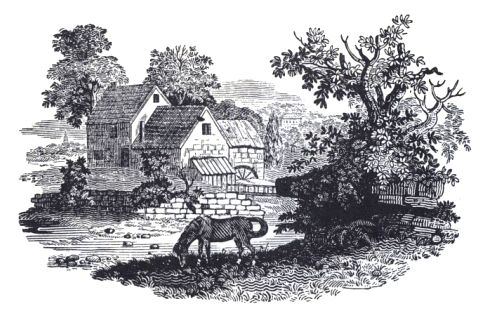May 27
Posted by sydney on May 27th, 2009

- 1792: May 27, 1792 – The missel-thrush has got young.
- 1791: May 27, 1791 – Garden red valerian blows: where it sows itself soon becomes white.
- 1790: May 27, 1790 – Thunder; damage done in London.
- 1788: May 27, 1788 – Mr White of Newton fetches water from Newton pond to put into his tank.
- 1787: May 27, 1787 – There are three creatures, the squirrel, the field-mouse, and the bird called the nut-hatch (sitta Europaea), which live much on hazel nuts; and yet they open them each in a different way. The first, after rasping off the small end, splits the shell in two with his long fore-teeth, as a man does with his knife; the second nibbles a hole with his teeth, so regular as if drilled with a wimble, and yet so small that one would wonder how the kernel can be extracted through it; while the last picks an irregular ragged hole with its bill: but as this artist has no paws to hold the nut firm while he pierces it, like an adroit workman, he fixes it, as it were in a vice, in some cleft of a tree, or in some crevice; when, standing over it, he perforates the stubborn shell. We have often placed nuts in the chink of a gate-post where nut-hatches have been known to haunt, and have always found that those birds have readily penetrated them. While at work they make a rapping noise that may be heard at a considerable distance.
- 1786: May 27, 1786 – Mr Richardson came.
- 1784: May 27, 1784 – My great single oak shows many catkins.
- 1783: May 27, 1783 – Not one spring chafer this year.
- 1782: May 27, 1782 – Men have not been able to sow all their barley.
- 1780: May 27, 1780 – Large blue flag iris blows. Flesh-flies abound. Timothy the tortoise possesses a much greater share of discernment than I was aware of: & “.. is much too wise to go into a well;” for when he arrives at the haha, he distinguishes the fall of the ground, & retires with caution, or marches carefully along the edge: he delights in crawling up the flower-bank, & walking along it’s verge.
- 1778: May 27, 1778 – The missel-thrush sings much: his song is loud, & clear, but without any variety; consisting of only two or three wild notes.
- 1777: May 27, 1777 – Field crickets begin their shrilling summer sound. My horses began to be turned-out a nights.
- 1775: May 27, 1775 – No thoro’ rain in this district since the 9, 10, & 11 of March. The small ponds in the vales are now all dryed up, while the small ponds on the very tops of hills are but little affected. can this difference be accounted-for from evaporation alone, which certainly is most prevalent in bottoms: or rather have not these elevated pools some unnoticed recruits by condensation, or some other secret means in the night time, so as to draw supplies to themselves from dews & mists, especially where trees over-hang? Without a constant supply the cattle alone must soon drink them. It must be allowed that in these parts the upland ponds have the most clayey, & holding bottoms: yet this advantage alone can never occasion the difference, the circumstance of cattle being considered.
- 1770: May 27, 1770 – Cold & dark. Harsh, hazy day.
- 1769: May 27, 1769 – If the bough of a vine be cut late in the spring just before the shoots push out, it will bleed miserably; but after the leaf is out any part may be taken off without the least inconvenience. So oaks may be barked while the leaf is budding; but as soon as they are expanded the bark will no longer part from the wood; because the sap, that lubricates the bark & makes it part, is evaporated off thro’ the leaves.
Notes:
The 1787 entry on nut-cracking methods is reproduced in Letter LVI of The Natural History of Selborne. A ‘haha’ is a kind of ditch in lieu of a fence that was fashionable in landscaping at this time, designed to blend invisibly into the landscape; this would be Timothy’s first spring in Selborne. The 1769 entry on ‘barking’ oaks– oak bark was used for its high concentration of tannins, in the production of leather. There’s some interesting further notes on appropriate seasons and methods for barking in this 1825 agricultural guide.
 Theme Ported to
Theme Ported to